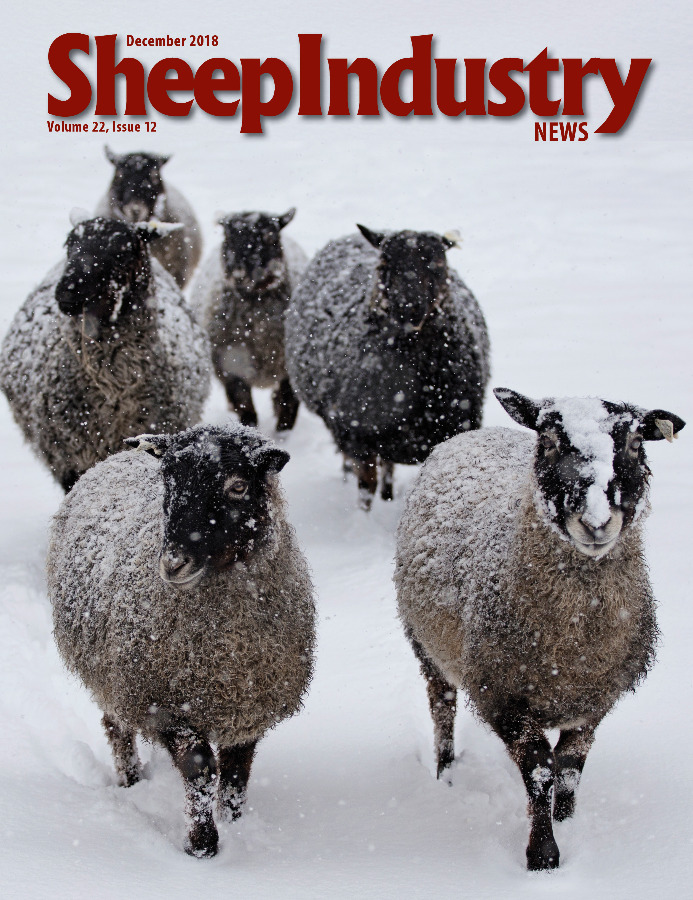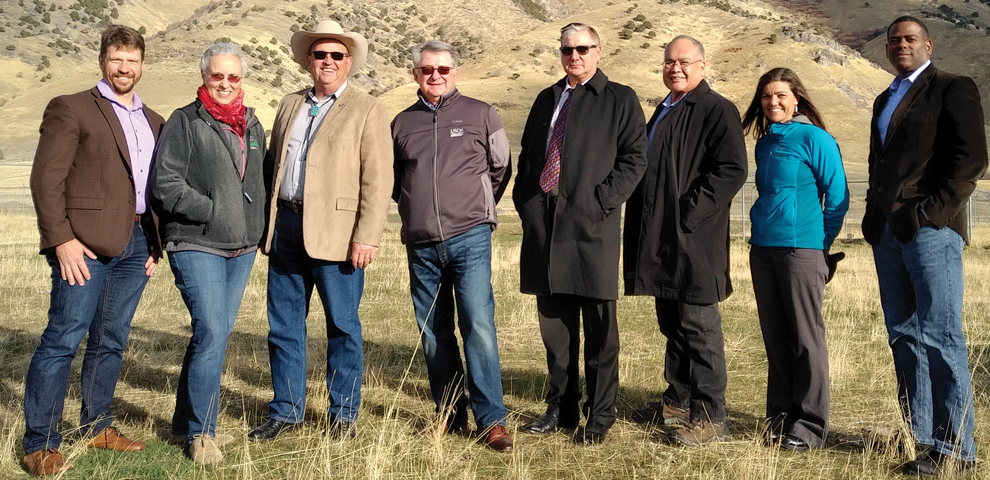
- December 2018
- President’s Notes
- Regulation of Fake Meat Creates Issues
- 2019 ASI Annual Convention
- American Wool Called to Duty in Army Uniforms
- Publication Sheds Light on Mycoplasma Ovipneumoniae
- Sheep Dairies Turn to Processing for Profits
- Culinary Experience Connects Chefs with American Lamb
- Obituary: Dr. Gerald Kennedy
- Market Report
- Jerry King Cartoon
- Around the States
- The Last Word
To View the December 2018 Digital Issue — Click Here

Wildlife Services Plays Vital Role in Sheep Industry
Mike Corn, ASI President
November was a busy travel month for ASI leaders and staff as we represented the association at several sheep association meetings (West Central States, Kansas, Ohio, Minnesota), the National Association of Farm Broadcasters Convention and the Dairy Sheep Association of North America Symposium.
I had the privilege to travel to the West Central States meeting in Casper, Wyo. It’s always good to get out and meet with friends – both old and new – at sheep meetings. But before I headed to Casper, I made a stop in Utah for a stakeholders meeting with Wildlife Services.
 The agency invited ASI leaders to meet with national and regional officials as a key stakeholder of the predator program. The meeting in Logan, Utah, also included Utah Wool Growers Association leader Sunni Titmus, who spoke on behalf of the sheep operations in the state.
The agency invited ASI leaders to meet with national and regional officials as a key stakeholder of the predator program. The meeting in Logan, Utah, also included Utah Wool Growers Association leader Sunni Titmus, who spoke on behalf of the sheep operations in the state.
We discussed the need for more funding to protect livestock, continued use of the M-44 in the states that use it, the shortage of pilots and ASI efforts to lobby for more appropriations via Congress.
We were pleased to hear program officials were getting positive feedback from the political appointees on how important Wildlife Services is to ASI and the state sheep associations. The agency routinely hears this message from Secretary of Agriculture Sonny Perdue and Under Secretary Greg Ibach, both of whom ASI has met with this year concerning Wildlife Services.
Discussion among the group centered on research, including the work at facilities in Colorado and Utah. Coyotes – the largest single predator problem in the sheep industry – are the main focus of the Utah facility.
Each year, ASI spearheads congressional support for the agency via a letter signed by a coalition of some 200 livestock and agriculture organizations. There’s no doubt about how important Wildlife Services is to the American sheep industry. I thank those in the agency’s administration who took time to meet with myself, Sunni and ASI Executive Director Peter Orwick in early November.
As you’ll read in this issue of the magazine, ASI is also working with others in the livestock industry to address the issue of fake meat. The fact that the U.S. Department of Agriculture and the Food and Drug Administration had to wrangle over who should have jurisdiction on the product is proof that fake meat is a questionable protein source. I’ll take ranch-raised American lamb any day over something grown in a lab.
As we enter the holiday season, I wish you and your family a Merry Christmas and a happy New Year. I hope you have the opportunity to enjoy this special time with friends and family.

